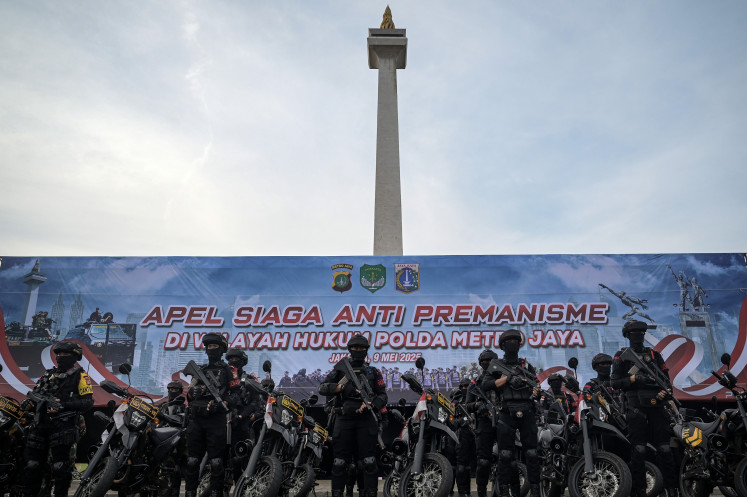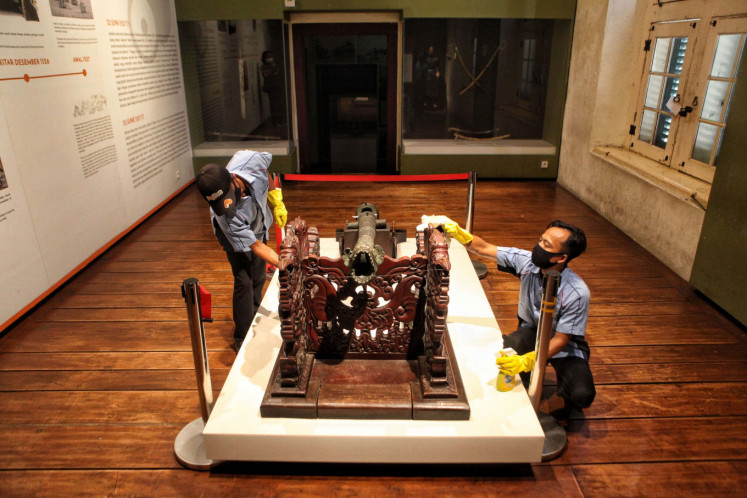Celebrating the New Year in medieval Baghdad
Along with a prohibition on Christmas greetings, in the last few years weâve also seen the rising trend among Indonesian Muslims of calling for a prohibition on New Yearâs celebrations
Change text size
Gift Premium Articles
to Anyone

A
long with a prohibition on Christmas greetings, in the last few years we've also seen the rising trend among Indonesian Muslims of calling for a prohibition on New Year's celebrations. The argument is usually based on the celebration, if not the whole calendrical system, being deemed un-Islamic.
Curiously, adopting and inventing 'un-Islamic' practices, such as the calendrical system, is not a recent phenomenon in the long course of Muslim history. Adoption and invention are common as people don't fuss over the theological background of practices. While many Muslims today are mostly only familiar with the Hijri calendrical system, medieval Muslims of the 8th century were also familiar with the Kharaji calendar.
As soon as Muslims established a settled agrarian society, people found the Hijri calendar inadequate for maintaining their economy, where tax had to be collected right after annual harvests. With the Hijri calendar, a 355-day lunar calendar based on moon cycles, tax collection does not fall at the same point relative to the seasons.
Any date in the Hijri calendar is 11 days later than the season, as the scholar Stephen Blake wrote. Thus, as a way to devise an agrarian calendrical system, the government at the time invented the Kharaji calendar, adopted from the ancient 365-day solar Persian calendar.
Similar to how people celebrate New Year's today, medieval Muslims celebrated Nowruz (new day) at the beginning of the agrarian year.
The celebration was joyful and merry, especially during the Abbasid Caliphate in the 9th century, known as the 'Islamic Golden Age' hallmarked by inter-religious cooperation.
Theatrical performances took place at the capital in Baghdad, homes were illuminated with cotton pods, people exchanged gifts and children ran around the street sprinkling perfume on pedestrians. In Egypt, Nowruz celebrations coincided with the date when the Nile River was expected to reach its highest level.
_____________________________
Today, the lines of distinction between 'Islamic' and 'non-Islamic' seem to be drawn sharply.
The Kharaji calendrical system was not perfect, however. Once every 33 years, certain days in the calendar had to be 'skipped', a process known as izdilaq (sliding), so that the date matched with Hijri calendar.
Over time, government astronomers devised several other calendrical systems such as the Mu'tadidi and Jalali calendars, derived from calculations of ancient Roman, Persian and Judaic calendars. Most were devised for the convenience of people, like in the case of the 11th century Jalali calendar, which was born from the inconvenience of celebrating Nowruz in winter.
Although agrarian calendars usually went along with the Hijri religious calendar, this is not to say that there were no attempts to purify 'non-Islamic' influences in a similar vein to what happens today. In fact, early Islam recognized a hadith, or Prophet's saying, quoted by one of the Prophet's companions Anas ibn Malik, which ordered the abandonment of the non-Islamic celebration.
The hadith, now popular again, cites present-day Muslims' annual celebrations following fasting periods: 'When I [The Prophet] came to you, you had two days which you used to celebrate, in the age of ignorance. Allah has replaced them for you with better days, Eid al-Adha and Eid al-Fitr.'
While Islam indeed puts the importance of the Prophet's sayings second to the Koran, Islamic legal tradition also recognizes a cautious technique of reading hadith known as asbab al-wurud (tracing the historical context of hadith), preventing people from reading hadith literally. It is also important to examine the period when a given hadith was constantly reproduced for a popular audience.
As the scholar Sidney Griffith astutely observes, hadith espousing harsher views of non-Muslims and strict definitions of what constitutes a Muslim are most often reproduced under times of crisis.
Those kind of Prophet's sayings, which were documented in the context of the 7th century when Muslims were still drawing sharp lines and consolidating a distinctive Islamic conception of ummah (community), only
became more relevant in periods when Muslim states were overrun by rebellions and, especially in later periods, invaded by foreign powers such as the Mongols and European states.
In a world where events were situated in and made sense only through religious symbols, a division in the political landscape also meant a division in a religious one. Harsher times produced harsher interpretations of religion.
In times of peace there is less attention paid to radical stances in defining what is 'Islamic' and what is not.
When outside threats became less of a concern, people just want to make life easier ' such as by adapting an ancient Persian calendar to use as one's own.
Perhaps in their minds the Koranic verse 'Allah intends for you ease and does not intend for you hardship' bore a much clearer instruction than looking for the obscure, forgotten un-Islamic background of certain cultural practices.
Today, the lines of distinction between 'Islamic' and 'non-Islamic' seem to be drawn sharply once again. The marginalized condition of Muslim countries has paved the way for the conception of a distinct, stricter 'Muslim' identity.
While there is freedom of choice for Muslims in following the strict identity, there is always an option to follow the more fluid, relaxed one. It is a product and a result of an age where mutual cooperation is and must be encouraged and facilitated; an age of today; and an age much like the often glorified 'Islamic Golden Age'.
______________________________
The writer studied politics at the University of Indonesia and is a member of the Young Interfaith Peacemaker Community Indonesia.









